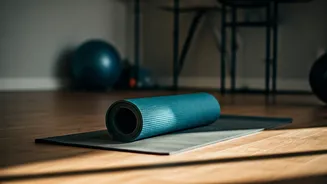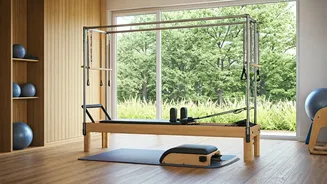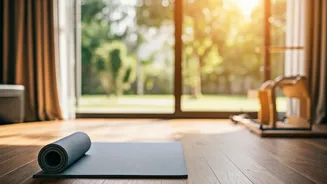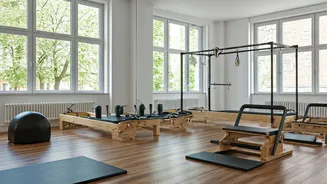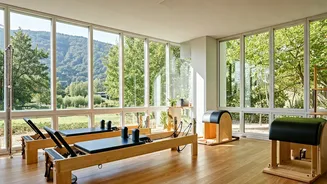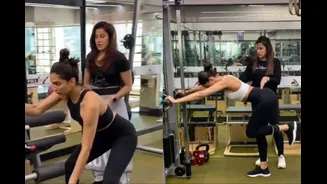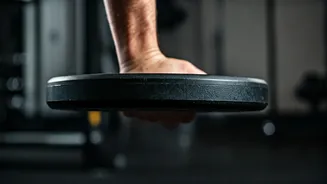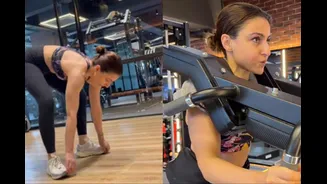Pilates: What It Is
Pilates is a system of exercise that concentrates on strengthening the body with an emphasis on core strength. This method promotes balanced muscle development,
improving posture, flexibility, and body awareness. Developed by Joseph Pilates in the early 20th century, the technique emphasizes controlled movements, proper breathing, and mindful execution of each exercise. Pilates can be adapted to suit different fitness levels, making it accessible for everyone, from beginners to athletes. The core principles include centering, concentration, control, precision, breath, and flow, which together create a holistic workout experience that benefits both the body and mind. Pilates is not just about physical fitness; it fosters mental focus and body coordination as well.
Warm-up: Preparing Your Body
Before diving into the main exercises, a brief warm-up is crucial to prepare the body for the workout and to prevent injuries. The warm-up segment typically involves gentle movements that activate major muscle groups. Examples of effective warm-up exercises include arm circles, neck rotations, and leg swings, each performed slowly and deliberately. These movements increase blood flow and lubricate the joints, making the muscles more pliable and reducing the risk of strain during more intense exercises. Focusing on proper breathing during the warm-up helps calm the mind and body, setting a positive tone for the workout. A thorough warm-up ensures the muscles are ready to perform and respond effectively to the Pilates exercises ahead.
Core Activation: The Basics
Core activation is at the heart of the Pilates practice, providing a foundation for all movements. Exercises designed for this purpose are intended to strengthen the deep abdominal muscles. A common starting point is the 'hundred', an exercise that involves lying on your back with knees bent, lifting the head and shoulders slightly off the ground, and pumping the arms up and down. Another effective exercise is the pelvic tilt, which helps engage the abdominal muscles and stabilize the lower back. Activating the core correctly during Pilates involves drawing the navel towards the spine, which creates stability and improves the effectiveness of each movement. Proper core engagement ensures the body moves with control and precision, optimizing results and minimizing potential injuries.
Pilates Exercises: Detailed Overview
The 10-minute Pilates routine includes several key exercises that effectively target different muscle groups. The 'roll-up' is designed to improve spinal flexibility and core strength, involving a slow and controlled rolling motion. 'Single-leg circles' enhances core stability and flexibility in the hip joint, while 'leg lifts' target the abdominal muscles. The 'teaser' exercise challenges balance, coordination, and core strength, requiring the simultaneous lifting of the legs and upper body. 'Side leg series' focuses on the hip and thigh muscles by lying on your side and performing a sequence of leg lifts and circles. These exercises should be performed with precision, focusing on controlled movements and deep, rhythmic breathing to maximize the benefits and avoid strain. Each exercise should be executed slowly, paying attention to body alignment and form to ensure optimal results.
Breathing: Enhanced Performance
Breathing plays a vital role in Pilates, profoundly impacting the effectiveness and benefits of the exercises. Deep, controlled breathing helps to engage the core muscles and improve the circulation of oxygen, enhancing performance and endurance. Generally, inhale through the nose and exhale through the mouth to control the movements. During exercises like the 'roll-up', exhaling as you curl the spine and inhaling as you uncurl it enhances abdominal engagement and provides stability. Proper breathing helps synchronize movement with breath, improving focus and concentration. Conscious breathing also aids in calming the nervous system, which promotes mental clarity. This integration of breath with movement makes Pilates a holistic practice, combining physical and mental benefits for a well-rounded workout experience.
Cool-down and Stretching
After the exercises, a cool-down session is crucial to help the body recover. It involves gentle stretches to increase flexibility and to reduce muscle soreness. Effective cool-down stretches include holding positions for 20-30 seconds, like hamstring stretches, quad stretches, and spine twists. This phase encourages relaxation and reduces muscle tension, promoting flexibility and range of motion. The cool-down phase also helps to lower the heart rate gradually, returning the body to a relaxed state. Stretches performed during this session prevent muscle cramps and improve circulation. Regular stretching ensures the muscles can recover from exercise, preparing the body for the next workout session and preventing potential injuries.
Consistency: Key To Success
Consistency is crucial for realizing the benefits of the 10-minute Pilates routine. Aim to practice the routine regularly, ideally most days of the week, to see the best results. Start slowly and gradually increase the intensity and duration as you become stronger. Listening to your body and taking rest days when needed prevents overexertion and injury. Incorporate the routine into your daily schedule to create a sustainable fitness habit. Consistency, along with mindful execution and proper form, ensures the muscles become toned and the core is strengthened. Over time, regular practice will also improve flexibility, body awareness, and overall well-being, enhancing both physical and mental health. This approach will make the fitness journey more rewarding and sustainable.


